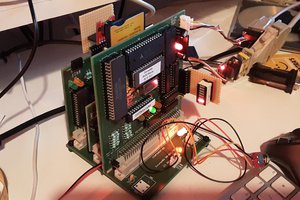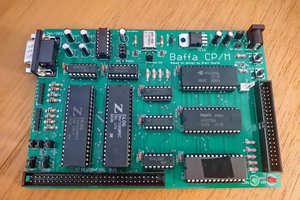I bagged nine OKI 80C85AH chips for just £8 on eBay. Rated 5 MHz clock according to the datasheet.
This project starts from a design by Sergey Kiselev. I intended to replace the 1-channel serial chip with a 16C552 which has 2 serial ports, internal baud-rate generation, and a parallel port, but that is not needed at the moment.
 Keith
Keith
 Nick Brok
Nick Brok
 Augusto Baffa
Augusto Baffa
 Plasmode
Plasmode